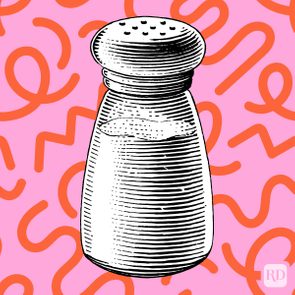You’ve said it a dozen times, but do you really know the meaning of tie the knot?

What “Tie the Knot” Means and Where the Phrase Came From

Did somebody say “wedding season”? I, for one, am a sucker for a good love story. There’s just something so beautiful about two people actively choosing to spend the rest of their lives together. But between cultural differences and centuries-old rituals, we’re often attending ceremonies that we don’t really know much about. Why do couples wear wedding rings on their ring fingers? Why is it that the bride always walks down the aisle? And what is tie the knot’s meaning, anyway?
If you’re heading to a wedding soon, you might be wondering what it really means to congratulate a couple for “tying the knot.” Read on to find out what the phrase actually means, where it may have come from and how it factors in to time-honored wedding traditions.
Get Reader’s Digest’s Read Up newsletter for more knowledge, tech, travel, cleaning, humor and fun facts all week long.
What is tie the knot’s meaning?
Very literally, tie the knot means “create a knot.” But in a wedding context, it takes on a whole new meaning. During the ceremony, tie the knot means “get married” or, as Merriam-Webster puts it, “perform a marriage ceremony.”
You may say to someone, “These two lovebirds are about to tie the knot,” or you might offer up a wedding wish like “Congratulations on tying the knot!”
But why do we say it in the first place? The answer lies in the history of wedding traditions.
Where did the phrase tie the knot come from?

It’s hard to pinpoint the exact genesis of the phrase tie the knot. But a look at the term’s cultural significance and usage around the globe can give us a better idea of its history.
The origin of the phrase tie the knot lies in the folklore and marriage traditions of cultures around the world, where knots make an appearance as a symbol of unity. While this phrase could’ve originally stemmed from a symbolic knot, actual physical knots have been used in marriage ceremonies across cultures for many centuries.
Here are some rituals that provide context for tie the knot’s meaning and origin:
Hindu Vedic traditions
According to the Daily Jagran, Gathbandhan (or Granthi Bandhanam) is known as the “knot of union” and is a big part of Hindu Vedic wedding rituals. It’s the moment in a Hindu wedding when a strip of the bride’s dupatta (a shawl-like scarf) is tied to the groom’s scarf, symbolizing the sacred, lifelong bond between them and their two families.
Celtic traditions
The ancient Celtic practice of handfasting tied ribbon, cord or a piece of cloth around the couple’s hands to both literally and symbolically bind them together. During the Middle Ages, this tradition of “tying the knot” was typically part of the betrothal or engagement period before the wedding.
These days, you’re most likely to see handfasting in countries like Ireland and Scotland, particularly in secular or pagan ceremonies. And here’s an interesting fact: Handfasting rituals were legally binding in Scotland until the Marriage (Scotland) Act in 1939, which changed the rules. It was once more recognized as legal in 1977, when the law was changed again. Now, the ceremony is legally binding as long as it is authorized by the Registrar General.
African traditions
In some African and African American traditions, couples symbolically “tie the knot” by having their wrists bound with a cord or strip of kente cloth, The Knot reports. This knot-tying is an intimate ritual that weaves the couple’s lives and families together in a single gesture.
What are some synonyms for tie the knot?
There are phrases that have a similar meaning to the idiom tie the knot, yet they all have different origins. These include:
- Get hitched
- Walk down the aisle
- Say “I do”
- Take the plunge
- Get spliced
- Plight your troth
- Become man and wife
Bottom line? However you phrase your congratulations message, what matters most is wishing the new couple a lifetime of love, laughter and joy that never runs out.
Why trust us
At Reader’s Digest, we’re committed to producing high-quality content by writers with expertise and experience in their field in consultation with relevant, qualified experts. We rely on reputable primary sources, including government and professional organizations and academic institutions as well as our writers’ personal experiences where appropriate. We verify all facts and data, back them with credible sourcing and revisit them over time to ensure they remain accurate and up to date. Read more about our team, our contributors and our editorial policies.
Sources:
- Merriam-Webster: “Phrases – tie the knot”
- Mental Floss: “Where Does the Phrase ‘Tying the Knot’ Come From?”
- The Daily Jagran: “What Is The Significance Of Gathbandhan In Hindu Wedding? Shastras Explain”
- Brides: “The Meaning and History Behind “Tying the Knot””
- The Knot: “Did You Know “Tie the Knot” Meant This at Weddings?”
- Culture Trip: Where Does the Phrase ‘Tie the Knot’ Come From?”
- BBC: “Tying the knot: handfasting through the ages”






















